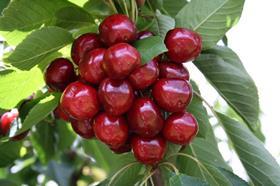
New figures from the Australian Bureau of Statistics (ABS) have detailed the decline in the country’s horticultural exports in the past financial year, with modest growth in vegetable and nut sales being outweighed by a significant dip for fruit.
Australia’s horticultural export values in the 12 months to June 2011 fell to A$721.65m, according to the figures, a 10 per cent decline on the year before.
Fruit exports fell 24 per cent to $317.69m, while vegetables rose 9 per cent to A$180.01m and nuts rose 4 per cent to A$206.08m.
A combination of seasonal weather problems and the soaring Australian exchange rate against the US dollar were the prime culprits, according to Max Summers, CEO of the Australian Horticultural Exporters Association.
“The exports are very much linked to how the dollar performs,” he told Fruitnet.com. “If we continue to have a high dollar, the industry will trend along as it is now, and I don’t see any growth happening in the sector if the dollar remains as strong as it is.”
Citrus sizing off
The biggest bite out of Australia’s fruit exports came from citrus, which accounted for 56 per cent of fruit exports during 2010/11 and fell 29 per cent in value. The previous season was a small crop of extremely large fruit, which had trouble finding homes in export markets.
Citrus fortunes are likely to be little improved by this season, despite a 180-degree turn in the crop to a bumper harvest of small fruit.
“For the citrus exports, the tonnage might hold its place this year, but the value will decline dramatically because of all the small fruit we’re exporting,” David Minnis of 888 Exports told Fruitnet.com.
“Those small navels are selling in Asia for less than A$20 a box landed, which is not much of a return. There must be people working on A$0.50 a carton in commission, which is just treading water, and hoping next year the fruit will be bigger.”
Cherry falls off top
Australia’s cherry exports also saw a decline of 42 per cent, largely on the back of a poor season. Heavy rains just coming into picking may have broken the long-running drought, but they also caused significant crop loss to growers. At the same time, competition from Chile hit the market in peak form.
“I thought last year Chile ticked every box,” stated Mr Minnis. “They had the volume, the quality, and they were cheap. If they continue to do that we will struggle to hold our place in the market.”
Cherry exporters are also facing tightening entry protocols in markets in Asia, Thailand being the prime example. A new protocol for Thailand requires Australian mainland cherries be cold sterilised, and when it comes into force will effectively cut off any airfreight to the market.
“No exporter has ever seafreighted cherries from Australia to Thailand, and no one is going to do land-based cold treatment, so we will lose that market with the new protocol, if it’s not negotiated to be a bit more satisfactory,” said Mr Minnis.
Root opportunities
Bucking the trend, potato and onion exports did see growth of around 30 per cent each for the year. The two make up 36 per cent of Australia’s vegetable exports.
Mr Summers said the good results largely came down to seasonal opportunities, particularly with a global shortage in onions, and better market access conditions into Thailand and Korea for potatoes.
Carrots, which make up 29 per cent of Australian vegetable exports, and asparagus with a 17 per cent share, were both within 1 per cent of last year’s results, the ABS figures showed.
Nuts come out of shell
Nut exports are the real growth potential for Australia’s horticulture industry, with almonds spearheading the category. Almond sales grew 19 per cent to become the largest nut export at A$115m.
“The nut industry is quite well placed,” said Mr Minnis. “High labour costs in Australia don’t impinge on that industry as much as fruit and vegetables `because` they’re mechanically harvested. They’re a dryland crop that lends itself to large-scale production, and the plantings have increased.”
Australia’s almond industry predicts strong growth, and production is set to go from 38,371 tonnes in 2010 to 45,400 tonnes this year, an 18 per cent increase, to 84,400 tonnes in 2015, at which point the industry will overtake Spain to become the second largest producer in the world with 9 per cent of global production.
That growth will find a ready market from the rapidly rising demand in China and India, as well as other countries across Asia and the Middle East.



